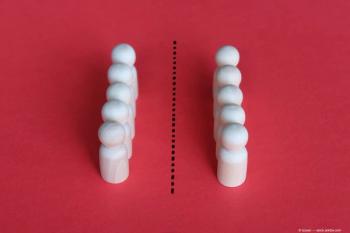
Changing focus of accommodating IOLs now reaching a new level
For ophthalmologists looking for new lens options, accommodative IOLs continue to evolve in promising directions.
This article was reviewed by Stephen D. McLeod, MD
Change is a constant and with change in accommodating
True accommodation means that the optic must instantaneously change power from distance to near and back. The most familiar strategy to accomplish this is a change in optic position, but other strategies to produce accommodation are changes in the lens curvature and in the refractive index or optic power, according to Stephen D. McLeod, MD, professor and chairman of ophthalmology, University of California San Francisco.
Related:
Regarding the lens position, surgeons are familiar with both the CrystaLens (Bausch + Lomb) and the Kellan Tetraflex (Lenstec). The Tek-Clear Accommodative Lens (Tekia), a lens with a 360-degree haptic structure and a single optic vault, is a slightly newer
Lenses that depend on movement to change accommodation are limited in their ability to do so.
Dr. McLeod pointed out that an issue with all of these devices are limited by the typical optic powers required by patients who are emmetropic or low and high myopes.
“When dealing with an optic that moves forward, the degree of that movement is not great, often much less than 1 mm, and for most lens powers implanted, the observed degree of movement produces minimal accommodative change proportional to the power of the lens that is moving forward,” he said.
According to Dr. McLeod, the accommodative
Related: Striving for perfection: Creating the perfect IOL
“For just about any IOL regardless of power, the amount of accommodative change that you get from the entire lens moving forward a given distance is an order of magnitude less than the accommodative change you get from an increase in curvature that shallows the anterior chamber by the equivalent amount,” he said.
The FluidVision IOL (PowerVision, now Alcon), a lens curvature
The Opira accommodating IOL (ForSight Labs) is a sulcus-based device for which the haptics are fixed in the capsulorhexis. “The anterior optic accepts the fluid from the reservoir leading to the change in curvature,” Dr. McLeod said.
The Juvene IOL (LensGen) is based on the same principle as the Opira IOL. “This lens has two compartments. The anterior optic is the one that accepts the fluid from the reservoir, and the posterior element remains available for refining the focus power of the eye or for a toric correction,” he pointed out.
Related:
Atia Vision has also introduced in 2019 a modular presbyopia correcting
The Lumina IOL (AkkoLens) is an example of the
Dr. McLeod also noted that the advantage of this design is the ability to achieve a “substantial change in the focal length with minimal ciliary body effect.”
Because all of these approaches are mechanical, it raises the question about whether microfluidics or microelectronics can be put to better used to develop accommodative
Related: Light-adjustable IOL technology creates novel treatment window
The Sapphire AutoFocus IOL (Elenza) may be one answer to that question. This lens changes focus power without moving and relies on a power cell and a chip embedded in the eye. The device has a remote recharging system in goggles that are worn while the patient sleeps.
“This is a paradigm-shifting lens,” Dr. McLeod said, adding that the sensor for the device can detect change in the pupillary diameter, which triggers the electronics to send a signal to introduce a diffractive pattern on the optics.
The downsides are the large size, heavy weight and complex electronics, but as Dr. McLeod pointed out, it is showing us the direction in which accommodative
“There are many technologies under development in the accommodate arena,” Dr. McLeod concluded. “We are hopefully getting to the point at which we can actively change the true focus power of the system with truly accommodative devices in the reasonably near future.”
Stephen D. McLeod, MD
E: [email protected]
Dr. McLeod has no financial interest in any aspect of this report.
Newsletter
Don’t miss out—get Ophthalmology Times updates on the latest clinical advancements and expert interviews, straight to your inbox.













































